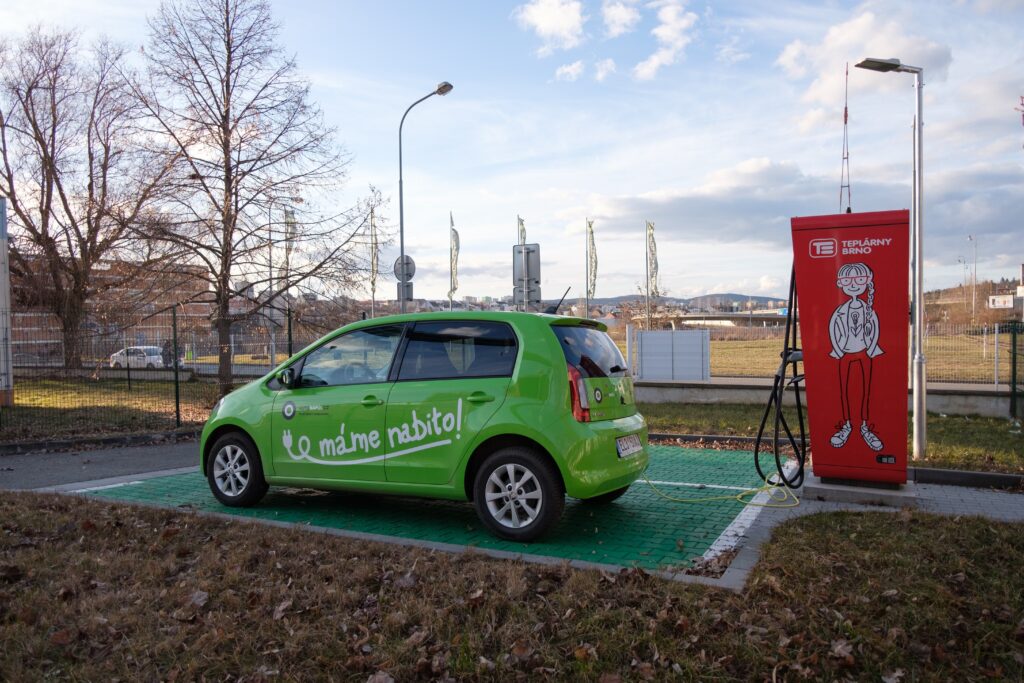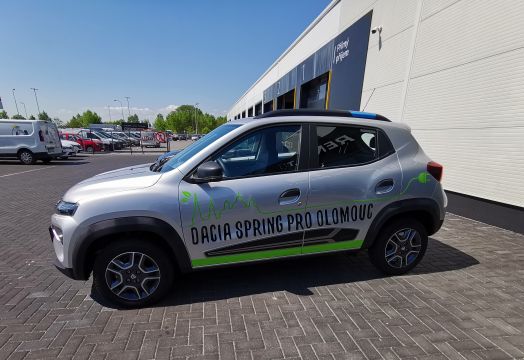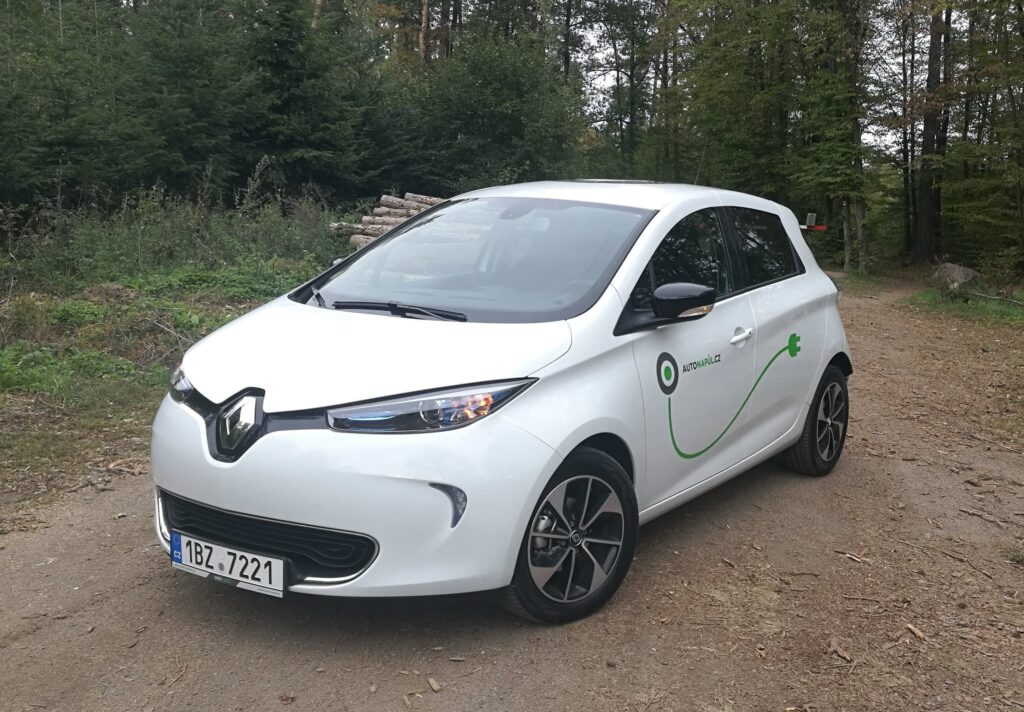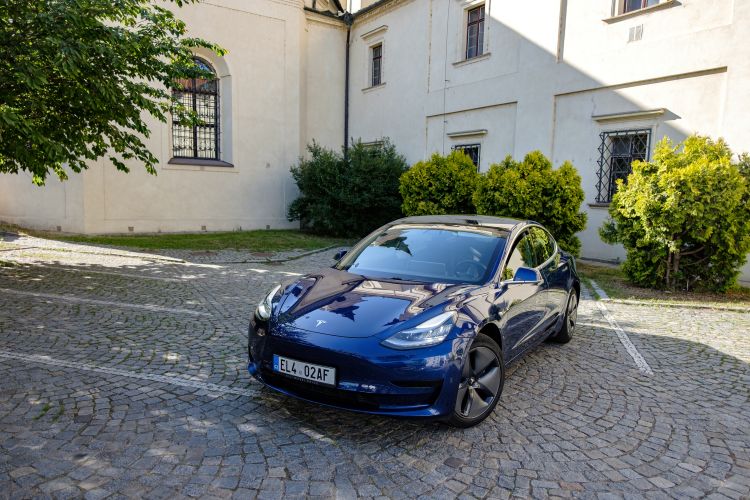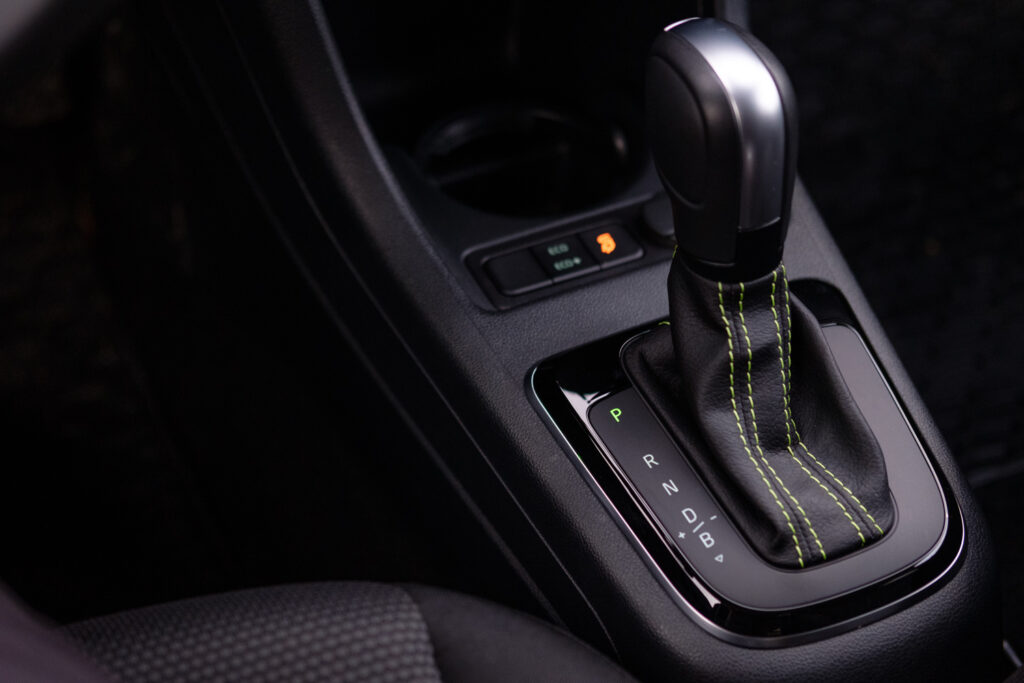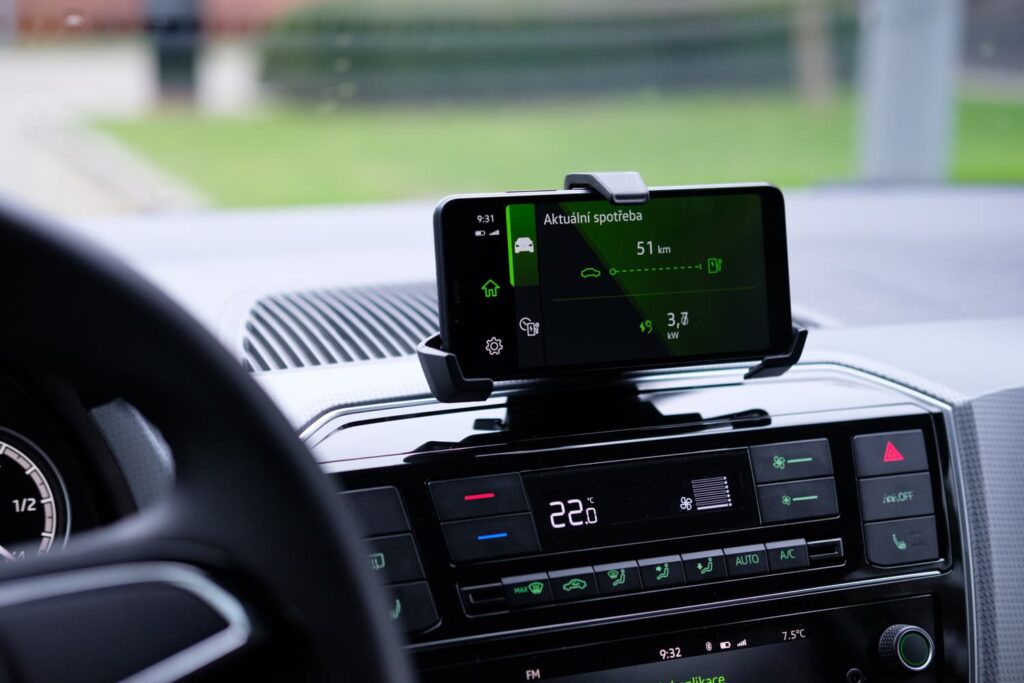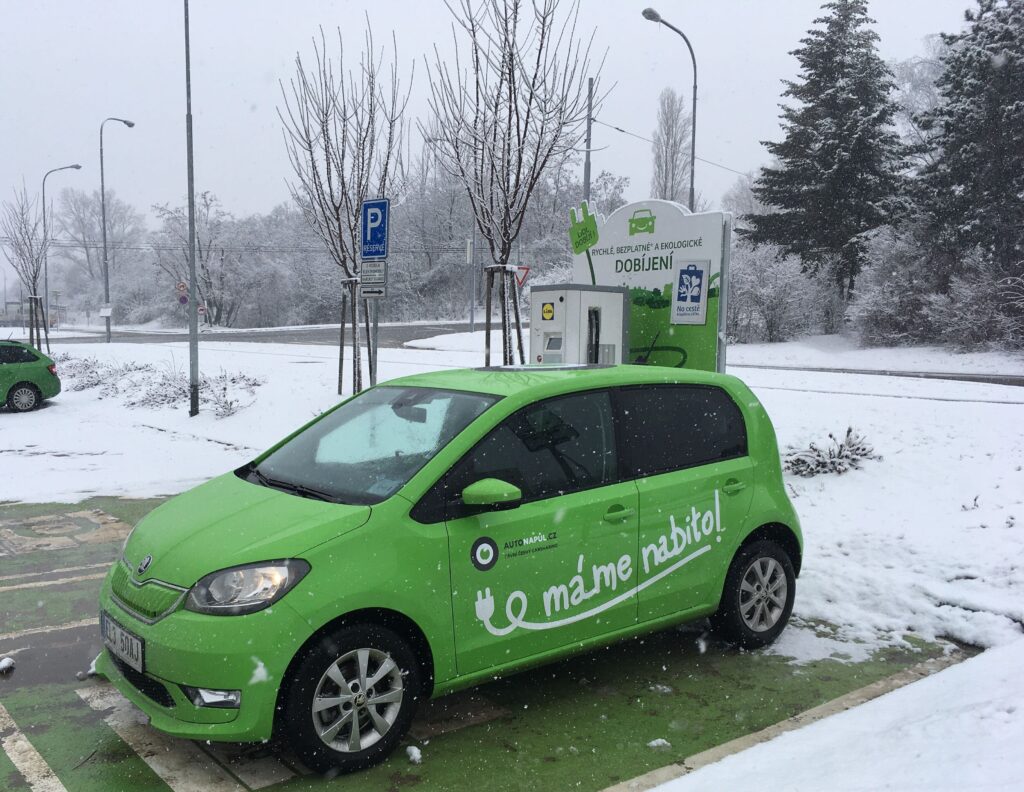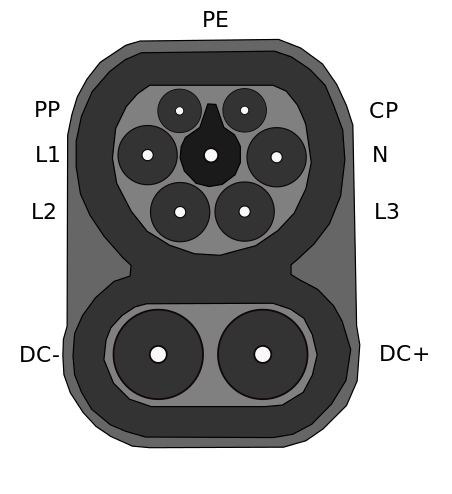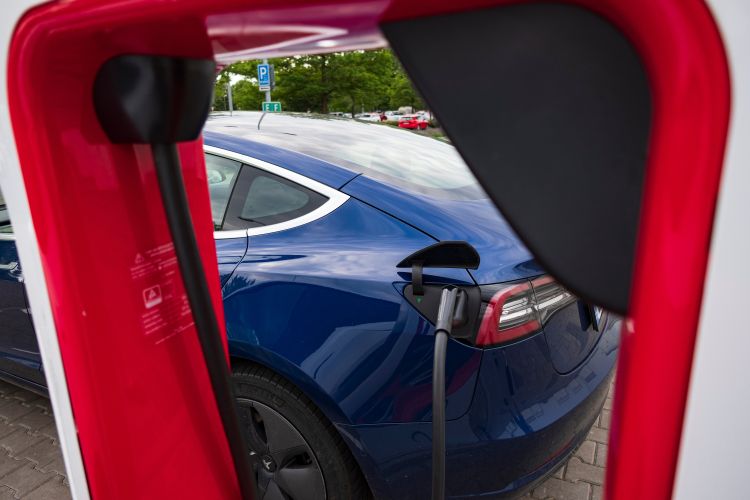…and how to use it

Škoda CitigoE iV 
Dacia Spring 
Renault Zoe 
Tesla Model 3
Currently, the electric car is rather an exception in the Autonapůl fleet, but their number will increase in the coming years - and not only in our fleet. That's why it's important to be well informed about the coming change.
There are many myths about electric cars and not everyone is familiar with the topic. This is the toll of the relatively rapid development in recent years. After reading this article, electric cars will no longer be an unfamiliar thing to you and you will know exactly how to behave during the journey, how to deal with charging and that it is no more difficult than driving a "normal" - combustion - car.
Basics of using an electric car
The basic driving experience with an electric car is the same as with a conventional car with an automatic transmission. Like an automatic car, an electric car has two pedals: accelerator and brake. You won't hear anything when you start or turn on the car, just a message on the dashboard (usually "Ready") letting you know that the car is ready to move. Simply put the gear lever or selector lever in D for forward or R for reverse. When the brake is released, the car will slowly start to move in the selected direction. A car with an automatic transmission behaves in the same way.
Just pay extra attention to your surroundings. Pedestrians and cyclists can't hear you trying to move off, especially when reversing, which is dangerous. Some electric cars make a sound up to 30km/h to warn pedestrians that you are moving, but you still have to think for other road users.
Want to know more? Electric cars lack most of the parts you find in a regular car. The entire internal combustion engine, exhaust, clutch, transmission are missing. All that's left of the gearbox is the fixed reduction gear, which is still firmly connected to the engine and wheels. Also, there is much less cooling required.
Driving an electric car
The ride is very agile and smooth as the car does not shift. Whenever you need to accelerate, the power is there. Especially at lower city speeds, the agility can surprise some - again, it's good to think of others here. Not every road user expects such acceleration. As well as acceleration, it's good to think about braking. Or rather, overall smoothness.
The main advantage of an electric car over a conventional car is the possibility of energy recovery. But even that is not 100%. The key to an electric car is to drive smoothly. You see that green light? Just take your foot off the accelerator and the car will start to slow down and store energy in the batteries. If you need to slow down more, you can use the brake pedal.
In the first phase, it brakes only with the electric motor, and when braking harder, it uses conventional friction brakes. The electric car is ideal for the city. It doesn't emit exhaust fumes and, thanks to regeneration, it also emits less dust from the brake pads than a conventional car. However, if you go out of town, there are some differences from a common car.
Reach
A car with an internal combustion engine is inherently very inefficient. The electric car is the opposite. You'll see much more of an effect on consumption from aerodynamic drag at higher speeds, running the air conditioning, driving in snow, heating. You certainly don't need to freeze, but just don't overheat unnecessarily inside the car. Same with speed. Are you doing 100 km on the motorway? If you go 10km/h faster, you'll only arrive a few minutes earlier, but you'll use a lot more energy. The electric car's reach, shown on the car's display, is continuously recalculated according to your driving and can be relied upon. The hilly profile of the route takes about the same amount out of the range as driving on the flat, assuming you make maximum use of the recuperation when driving downhill.
Most electric cars also have an ECO mode, which usually significantly reduces acceleration, top speed and usually the air conditioning and heating. In winter, it's also important to think about the fact that the energy in the battery is stored chemically. Driving will warm up the battery, but if it gets cold, the stored energy may not be able to be used by the electric car if the battery gets cold. If you drive 40 km in the evening, in the morning a cold car may greet you with a range of 5 km. In the case of a more charged battery, this is not a problem - it will warm up on the way. With a discharged battery, however, you may find that there is no longer enough energy in the battery to warm it up by driving. A safe limit is about 20-25% battery charge.
Want to know more? Air resistance increases with the square of the speed, so the difference between 120 and 140km/h is huge. For some, the heating in winter may be a surprise. In a combustion car, heat is a waste of engine inefficiency. But in an electric car, this excess heat is not. The ideal is to heat the car to cruising temperature while it is still connected to the charger. Keeping the interior at the same temperature then uses much less energy.
Charging an electric car
Charging an electric car needs to be approached differently than refuelling a car. Ideally, you should charge the car whenever it is parked and charging is possible. That's why at Autonapůl the car is picked up and returned directly to the charger. With a common car you don't drive to a petrol station to fill up ¼ of the tank. With an electric car, it makes sense.
Are you going to a meeting? Shopping? Are you staying overnight? Always try to see if there's a charging option. Also, consider that charging between 20-80% is ideal. While charging, the plug is locked in the car. To release it, you need to unlock it (button in the car or on the key). Either alternating current (AC) or direct current (DC) is used for charging.
Want to know more? The mains supply is alternating current (AC), and the car itself also runs on AC in most cases. But the energy stored in the battery is DC. So we need to get DC out of AC. If we charge with AC, the AC/DC converter in the car takes care of that. Since there is limited space, it has limiting power. That's why there are fast-charging stations that have a DC converter right in them, and the DC is already flowing into the car.
AC stations are slower, but cheap to acquire. DC are faster but much more expensive to acquire. If circumstances allow, it is wise to charge on AC. Slower charging also benefits the car battery.
Which connector to use for charging?
The vast majority of cars nowadays have a so-called CCS Combo connector. It is defacto two connectors in one:
Type 2 – only the top part of the connector: used for AC charging.
CCS – larger connector containing both top and bottom: used for fast charging on DC stations.
Want to know more? In Europe you will still see the CHAdeMO DC connector. This is originally a Japanese standard, but it is currently being displaced in Europe by the CCS Combo and you will see it in older electric cars and Nissan. The Supercharger uses the CCS connector, but only allows charging of Tesla cars.
Charging at final destination
We recommend using. What are the options for charging at my destination? The important variable is how many km you can charge in a given time.
- AC Charging Station - usually 4-22kW: charging speed 20-100km/h It is a box that has electronics in it for communication with the vehicle. You connect it to the vehicle via a Type 2 cable. The cable may have its own station, or it may just have a socket and use a jumper cable from the vehicle. The black part belongs to the station, the blue to the car. You can't plug the cable in the other way around, don't worry. Speed is often limited by the on-board charger, normally about 7kW = 40km/h. The Renault Zoe is one of the few cars that can use the full charging capacity.
- Industrial socket (5-pin, 32A) - 22kW: charging speed up to 100km/h In principle the same as the AC charging station, only all the electronics are hidden in a special cable (on one side there is a 5CEE socket, on the other a Type 2). Without it, this socket cannot be used. We have it as standard on the Renault Zoe Jenny. You will often find this socket in houses, industrial cabinets and premises.
- Normal socket 10A; 16A - 2.3kW: charging speed up to 12km/h; 3.7kW: 20km/h The most common charging method available anywhere. A normal 230V socket is sufficient. A charging cable for a regular socket is available in each of our electric cars. If you have older wiring in your home, caution is needed. Some sockets may only be for 10A (2kW).
Charging along the way
If you don't make it to your destination on a single charge, it's ideal to look for fast chargers along the way and recharge just enough to make it to your destination with an adequate reserve. It is not a good idea to charge your electric car to more than 80%. Charging the battery is then significantly slower. It is quicker to charge twice in the range of 20-80% of the battery than once at 10-100%.
Most charging stations in the Czech Republic have a total of three connection options: AC: Type 2; DC: CCS and CHAdeMO. In most cases, it is possible to charge one car on AC and one on DC at the same time.
It's polite not to block fast charging unless I'm still fast charging. If you are charging via DC, don't let the car charge to 100% unless you are physically near it. If you know you'll be on site longer, it's ideal to use AC charging. If you arrive at an occupied station where someone is charging on DC, you can start charging on AC and switch the car to DC when they leave.
Where to look for chargers
Unfortunately, paying for charging stations is not as easy as paying for petrol. There are quite a lot of providers and each has its own system. At any station you should be able to pay by card online. Instructions are on the station in question. But ideally you should be prepared in advance.
All Autonapůl electric cars have a chip for charging at ČEZ and EON stations. Just arrive, plug in the car, log in with the chip, choose the type of charging and you can go for a coffee. If you use other companies, they'll be sure to send you an electronic bill for charging, which we'll reimburse.
Stále je i dostatek stanic, kde se dá elektromobil nabíjet zadarmo. Mapuje je aplikace vytvářená samotnými řidiči elektromobilů pomocí služby Mapotic. Nejčastěji bývají u obchodních domů, případně nákupních center.
We recommend using. Czech Republic only. Chip in all electric cars Autonapůl.
We recommend using. Czech Republic only. Chip in all electric cars Autonapůl.
Individual station types and operators can be well filtered.
For trips to Slovakia, the charging station map can be useful to find and start charging at selected stations in the Czech Republic and Slovakia.
For less experienced users and longer journeys, the Electric Vehicle Trip Planner can be useful.
How to charge an electric car at a public station
When you arrive at the station, park as close to the charging port as possible. Most cars have it in the front, so ideally with the front of the car facing the station. You then connect the car to the stand. For DC charging, the cables are always firmly attached to the station. Just plug it into the car. For AC there are two options. Either the station has its own cable, or it just has a socket into which you plug the connection cable from the car. The black part belongs to plug into the station, the blue into the car. After connecting the car and the station, you can select the charging method on the station, authorize it if necessary (by chip, app, web…) and start charging. The same way to end the charging.
Want to know more? Even DC stations have different performances. Most charging stations in the Czech Republic have a maximum output of 50kW. Gradually 150kW are appearing. In the future, as batteries get bigger, we can expect 250kW-350kW stations.
Conclusion
Electric cars are becoming increasingly popular, much is being said and written about them, and it's good to be prepared for the change they bring.
Carsharing Autonapůl offers the possibility of using electric cars in Brno - Tesla Model 3 Olaf, Renault Zoe and Citigoe iV, and Olomouc - Dacia Spring.
